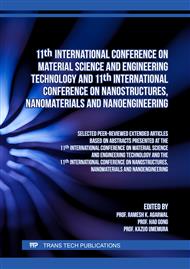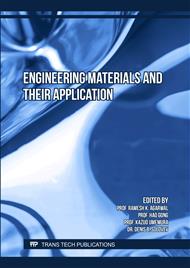p.109
p.115
p.127
p.137
p.143
p.149
p.155
p.163
p.169
Compression Behavior of Pilar Octahedral Lattice Structures
Abstract:
Lattice structures have a great potential in the fields like aerospace and biomedical, due to their outstanding properties like high strength, low mass, and good energy absorption capacity. With the development of the Additive Manufacturing technologies, there was an increasing attention towards these structures. The compressive behavior of the pilar octahedral lattice structure, which has the high strength to weight ratio was analyzed in this work. Lattice structures with three strut diameters of 1.5, 1.75, and 2 mm were built using Fused Filament Fabrication from Tough Polylactic Acid (PLA) plastic. Quasi-static compression tests were performed and two finite element models using beam elements with and without nodal beam diameter correction were proposed. It was found that as the diameter of the strut increases strength and elastic moduli are increased as well, while specific mechanical properties almost do not change. It was also confirmed from numerical and experimental results that lattice structure fails by forming a diagonal shear band. The relative error of the simulation without nodal correction in predicting the strength of the lattice with a 1.5 mm strut diameter was 1.58%. However, due to the inability of the beam element to model the behavior at the nodes properly its accuracy decreases for larger diameters. By modifying the model and using a nodal beam diameter correction, it has been possible to achieve a relative error of 0.58% and 12.15% for strut diameters of 1.75 and 2 mm respectively.
Info:
Periodical:
Pages:
143-148
Citation:
Online since:
May 2023
Authors:
Price:
Сopyright:
© 2023 Trans Tech Publications Ltd. All Rights Reserved
Share:
Citation:



